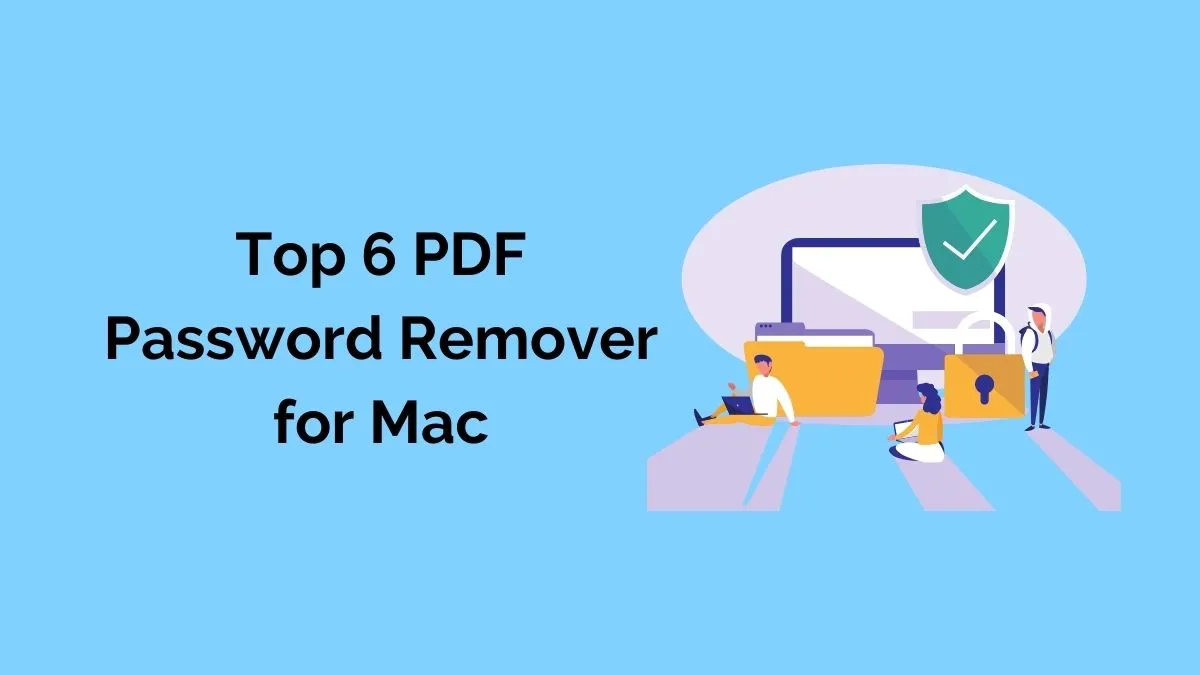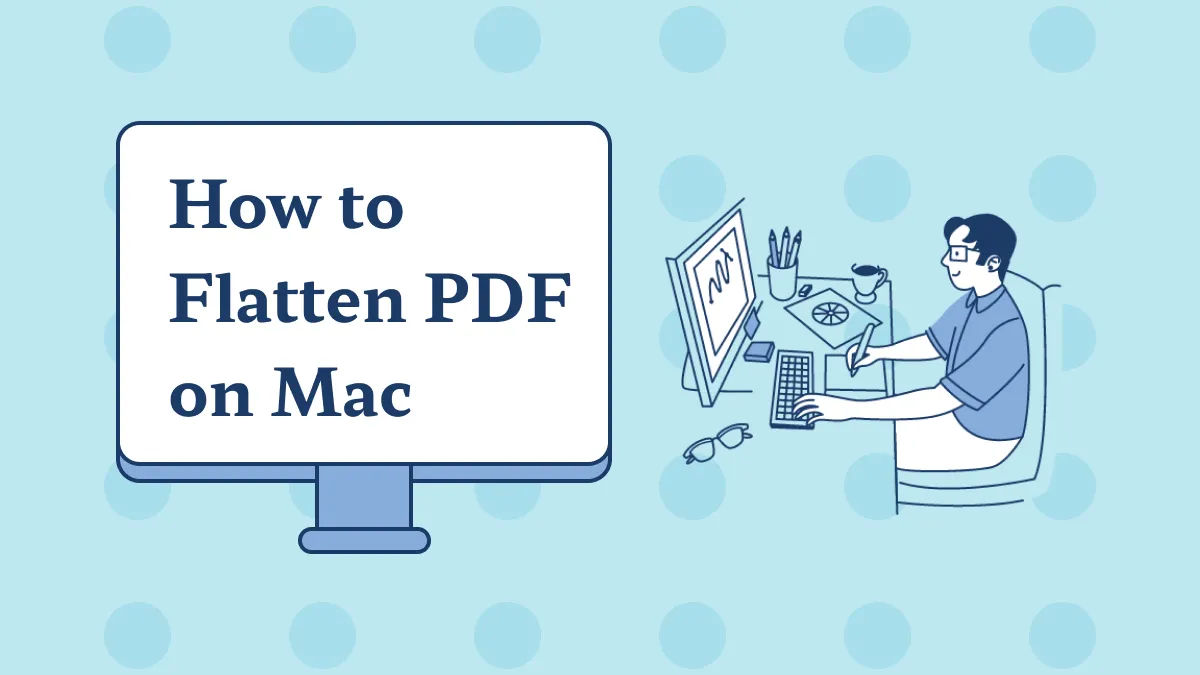Syncing your files and folders can provide a major benefit, such as accessing all your files using a single device. However, one needs to understand the exact procedure to sync files on Mac. In case you need to become more familiar with the steps, it can be a major hassle for you.
To avoid that, we will describe in detail how to sync files on Mac using a dedicated tool. We will also cover the ways to sync folders on Mac using different platforms in this guide.
Part 1. How to Sync Files on Mac with UPDF Cloud?
UPDF for Mac is the best tool when it comes to Mac file sync software. With the built-in UPDF Cloud feature, users can easily upload and access their documents across devices. Moreover, it is protected with multi-layer encryption to keep your documents safe.
Also, the data is split across multiple physical servers to prevent data loss. Now, let's head to the following steps and learning uploading documents using UPDF Cloud:
Step 1: Enter the UPDF Cloud Feature and Access Document
Click the "Free Download" button below to install UPDF on your device.
Windows • macOS • iOS • Android 100% secure
Now, head to the left side toolbar and tap the "UPDF Cloud" option. You will now see the "Upload File" at the top of the UPDFs interface. Tap it to import the required PDF document to your cloud storage.
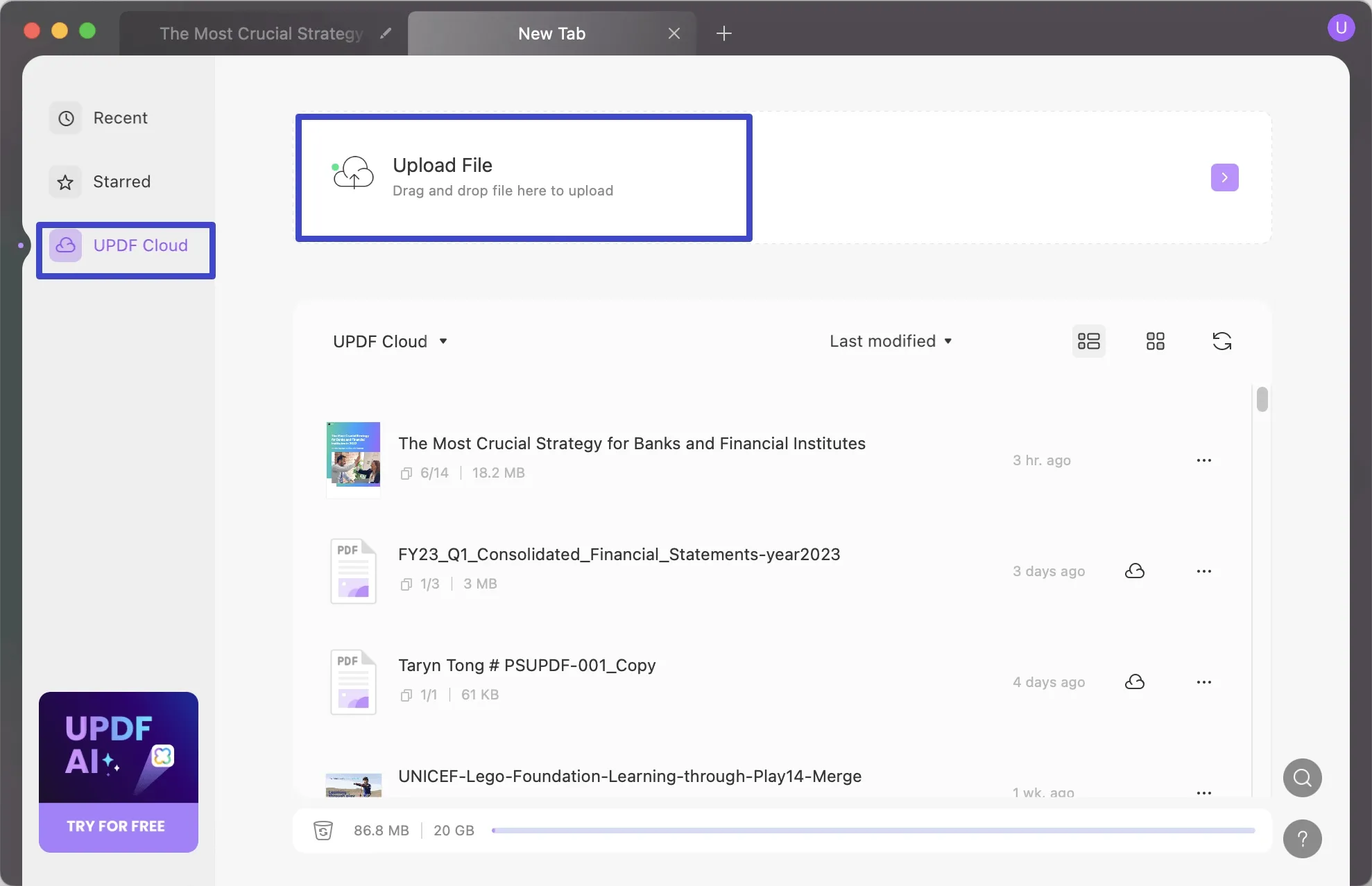
Step 2: Make Edits to PDF and Track Them Across Devices
When uploaded, click on the document under the "UPDF Cloud" section and enter the "Edit PDF" mode from the left side toolbar. Next, double-tap on the required point to make the necessary edits. Save the file via the "File" tab or press "Command + S" on your keyboard.
The changes apply to the file automatically, and you can now access this file with changes from across devices like Windows, Mac, iOS, and Android via UPDF Cloud.
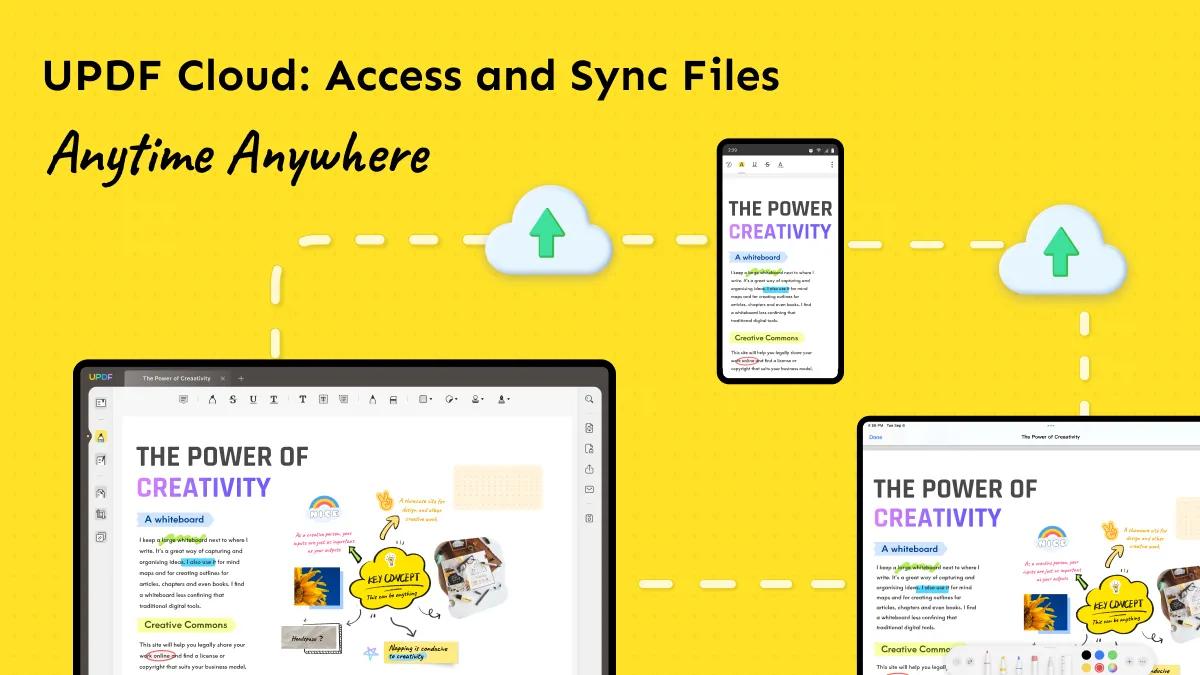
Part 2. How to Sync Folders on Mac?
If you are thinking that syncing folders on Mac of different data types can be a difficult task, that is not the case anymore. There are some efficient ways that can help you in syncing files and folders on Mac. We will discuss all 4 methods below in detail to help you understand the files and folder syncing methods effortlessly.
Way 1. How to Sync Folders on Mac
For those who want to sync data between their MacBook and iPhone or iPad have to connect to fulfill the first requirement. This can be done using an Apple-certified USB cable, after which you have to follow the steps provided below to perfect the macOS sync folders process:
Step 1: Access your MacBook and tap on "Finder" from the Dock to access your connected device. Find the device from the left-side panel and tap on it to access all the options available to manage your iOS device. Afterward, select the required content to sync the content from the toolbar below the iPhone name.
Step 2: Next, you will notice a checkbox under each category. Check the required boxes to turn on sync for the required categories. At last, head to the bottom right side and hit the "Sync" and "Apply" buttons to complete the Mac and iPhone sync process.
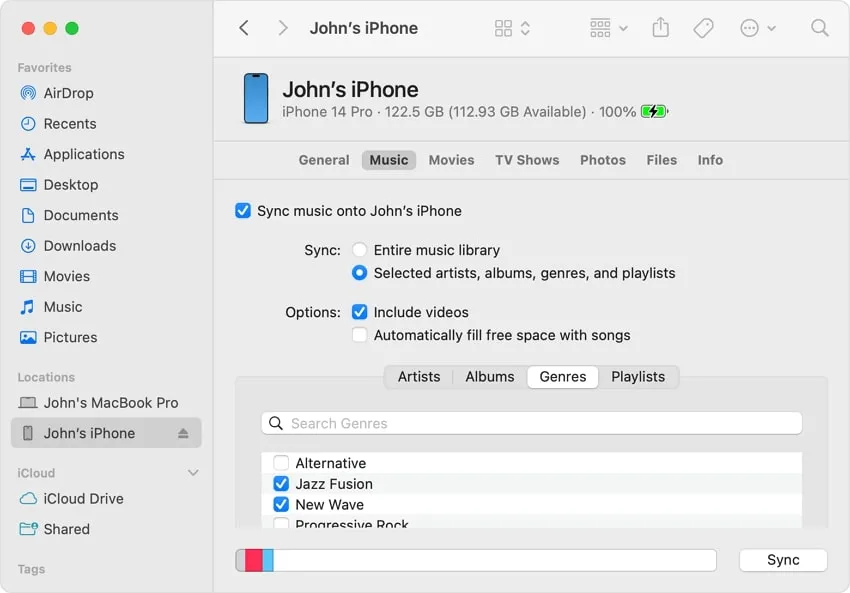
Way 2. How to Sync Google Drive on Mac
As you might already be familiar with, Google Drive is a helpful cloud storage that lets you save and edit files online. This tool supports various platforms and offers free storage consisting of 15GB. This has been a user favorite due to its easy connectivity with other Google services.
You can easily use this tool on macOS, but it is not yet available on Mac App Store. So, to use it, you will need to download it from the official site on the web browser. Now, head to the given steps and learn how to sync Google Drive on Mac:
Step 1: Begin by accessing Safari on your Mac and search for Google Drive's official website. As you open the website, look for the "Drive for Desktop" option and download it on your device. When done, look for the installation file in the Finder and follow the on-screen instructions to log in and install it on Mac.
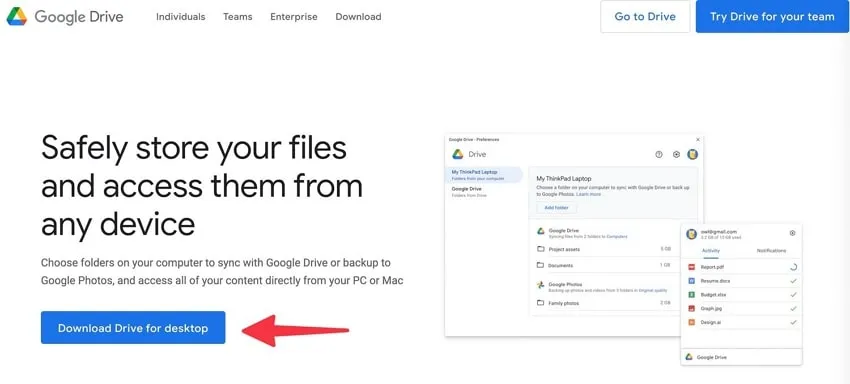
Step 2: Moving on, head to the Finder again, and from the left panel, locate "Google Drive" and tap it. Then, to customize it, click on the menu bar at the top of your screen and then choose "Google Drive." Following this, tap on the "Settings" gear and choose "Preferences."
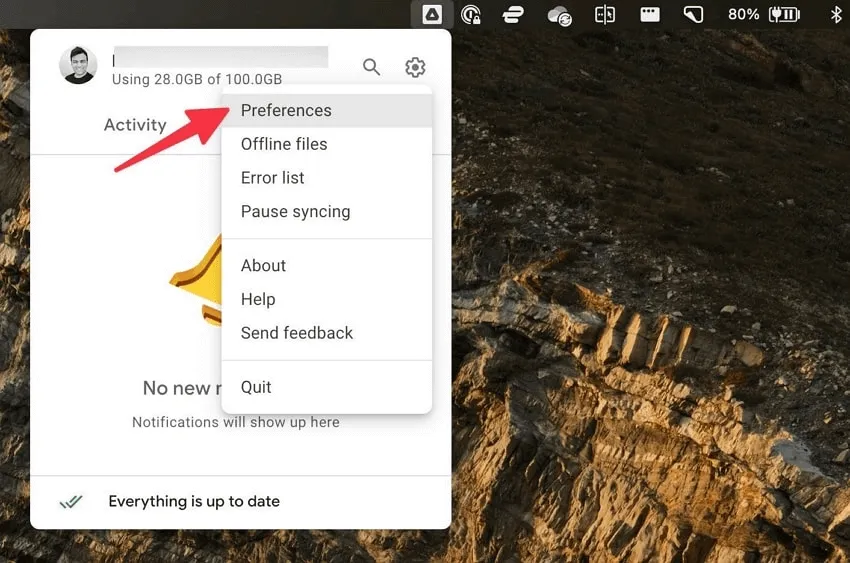
Step 3: Now, in the "Settings" window, locate and choose "Google Drive" from the sidebar. You will now get the option to control the syncing of your files. Next, tap "Stream Files" to maintain and keep the files in cloud storage.
Likewise, select "Mirror Files" to keep the files on Mac, along with the cloud. Here, "Mirror Files" will help you save the storage of your device. Once you have chosen from the two above options, you can then head to start syncing the folder along with files.
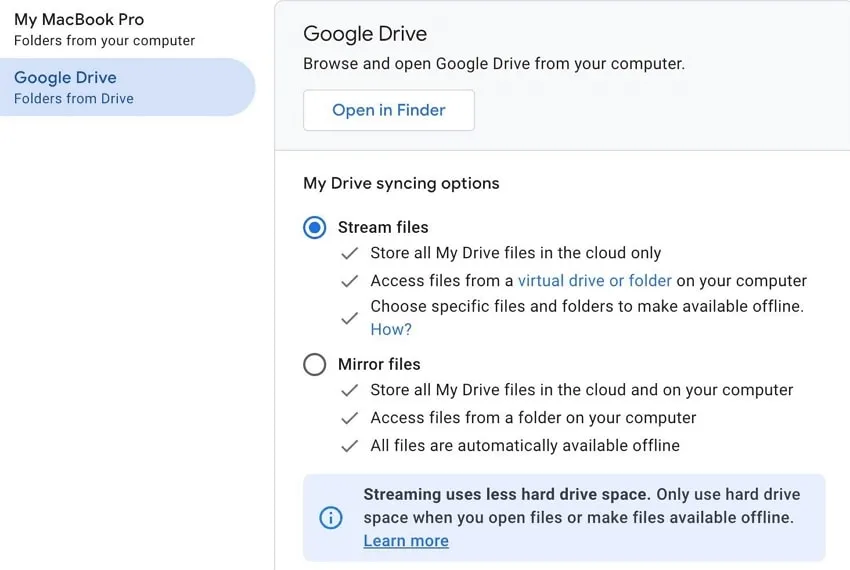
Way 3. How to Sync iCloud Drive on Mac
In this method, we will discuss the built-in iCloud Drive feature to sync files on Mac. Apple offers this cloud storage to help its users store and access data, documents, and other supported files and synchronize them across iCloud Drive-supported devices. Needing to learn how to sync iCloud Drive on Mac? Just follow the steps below to synchronize it without a hitch:
Step 1: Hover the cursor icon over the Apple icon at the upper left side of the screen and press it. From the drop-down list opens, choose "System Settings" and access it. Next, from the left panel, find "Apple ID," this can be an icon with your name on it or the Apple ID you registered on your Mac.
Step 2: Once you click the "Apple ID," access "iCloud" from the options on the right side of the window. Next, you will need to enter your Apple ID details, such as ID and password, in desired fields and proceed by tapping on the "Sign In" option. Then, find "iCloud Drive" from the apps list and activate it, and your folders and files will be synced.
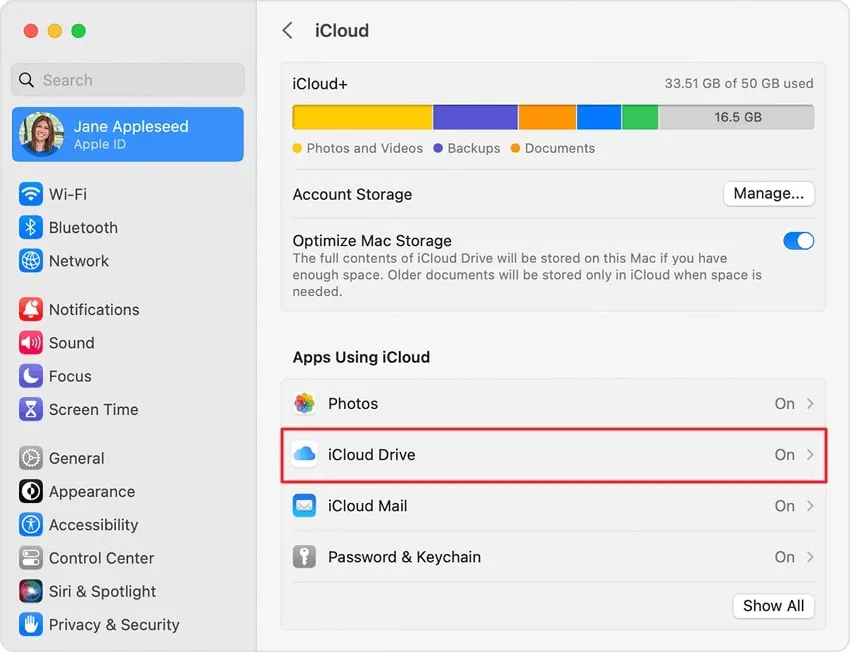
Way 4. How to Sync Dropbox to Mac
A popular cloud storage service, Dropbox has been available for years and has helped a wide range of users store and synchronize files. Dropbox supports various devices and likewise runs smoothly on macOS. However, you must have macOS 12.5 or later to access Dropbox and store files smoothly.
However, for much better performance, it is recommended to have macOS 13+. Now, if you want to learn how to sync Dropbox to Mac, you can check the below instructions and start syncing:
Step 1: Install the Dropbox macOS installer from the official website and install its application by running the installer. Afterward, login into your Dropbox account and select the way in which you want to sync files. You will be able to see the Dropbox folder in the Finder.
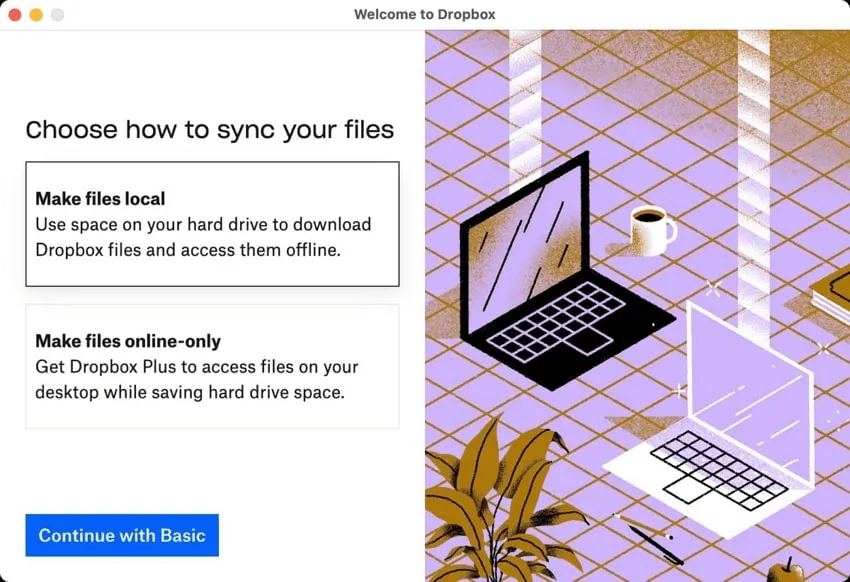
Step 2: You can also manage the Dropbox settings by clicking on the "Dropbox" icon from the menu bar of your MacBook and choosing the "Preferences" option from the "Profile" drop-down menu.
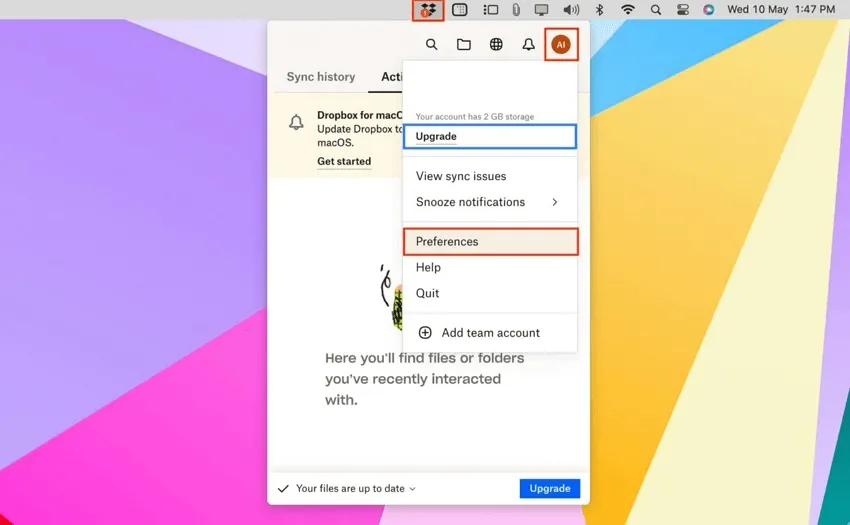
Part 3. FAQs on File Syncing on Mac
1. What is Mac syncing?
Mac Syncing is like moving files and ensuring they are the same on your Mac and your iPhone, iPad, or iPod touch. For instance, if you download music on your Mac, you can sync it so that the music also shows up on your Mac and iPhone. It helps keep everything consistent across your devices.
2. Is Sync compatible with Mac?
Yes, Sync is compatible with Mac. Sync can be used on a Mac desktop and is supported on macOS 10.11 or any newer version. This means you can use Sync without any issues if you have a Mac running macOS 10.11 or later.
3. How do I sync iPhone music to Mac?
To sync the Music to Mac on your iPhone, head to "General" and locate "Music" by scrolling down. Once you find it, hit it to open the settings and then enable the "Sync Library." Afterward, open your Mac and access the "Music" app. Now, click the "Music" tab from the top-left corner and select "Settings" from the list. Then, next to the "Library," tick the checkbox to synchronize the music across devices.
Conclusion
As we reach the end, syncing files on Mac is relatively easy and hassle-free. A variety of methods are used for syncing items across Apple devices, such as the four methods we have discussed in detail along the steps. This makes your task much easier and helps you find all the information within the same guide. Moreover, for more convenient and better document syncing, we recommend UPDF.
This offers the built-in UPDF Cloud feature for effective and easy document accessibility and syncing. You can even edit PDF documents and track changes on the spot across devices. Also, this tool offers various other features, such as a built-in AI tool for better PDF management. Try and download it from the button below.
Windows • macOS • iOS • Android 100% secure
 UPDF
UPDF
 UPDF for Windows
UPDF for Windows UPDF for Mac
UPDF for Mac UPDF for iPhone/iPad
UPDF for iPhone/iPad UPDF for Android
UPDF for Android UPDF AI Online
UPDF AI Online UPDF Sign
UPDF Sign Edit PDF
Edit PDF Annotate PDF
Annotate PDF Create PDF
Create PDF PDF Form
PDF Form Edit links
Edit links Convert PDF
Convert PDF OCR
OCR PDF to Word
PDF to Word PDF to Image
PDF to Image PDF to Excel
PDF to Excel Organize PDF
Organize PDF Merge PDF
Merge PDF Split PDF
Split PDF Crop PDF
Crop PDF Rotate PDF
Rotate PDF Protect PDF
Protect PDF Sign PDF
Sign PDF Redact PDF
Redact PDF Sanitize PDF
Sanitize PDF Remove Security
Remove Security Read PDF
Read PDF UPDF Cloud
UPDF Cloud Compress PDF
Compress PDF Print PDF
Print PDF Batch Process
Batch Process About UPDF AI
About UPDF AI UPDF AI Solutions
UPDF AI Solutions AI User Guide
AI User Guide FAQ about UPDF AI
FAQ about UPDF AI Summarize PDF
Summarize PDF Translate PDF
Translate PDF Chat with PDF
Chat with PDF Chat with AI
Chat with AI Chat with image
Chat with image PDF to Mind Map
PDF to Mind Map Explain PDF
Explain PDF Scholar Research
Scholar Research Paper Search
Paper Search AI Proofreader
AI Proofreader AI Writer
AI Writer AI Homework Helper
AI Homework Helper AI Quiz Generator
AI Quiz Generator AI Math Solver
AI Math Solver PDF to Word
PDF to Word PDF to Excel
PDF to Excel PDF to PowerPoint
PDF to PowerPoint User Guide
User Guide UPDF Tricks
UPDF Tricks FAQs
FAQs UPDF Reviews
UPDF Reviews Download Center
Download Center Blog
Blog Newsroom
Newsroom Tech Spec
Tech Spec Updates
Updates UPDF vs. Adobe Acrobat
UPDF vs. Adobe Acrobat UPDF vs. Foxit
UPDF vs. Foxit UPDF vs. PDF Expert
UPDF vs. PDF Expert


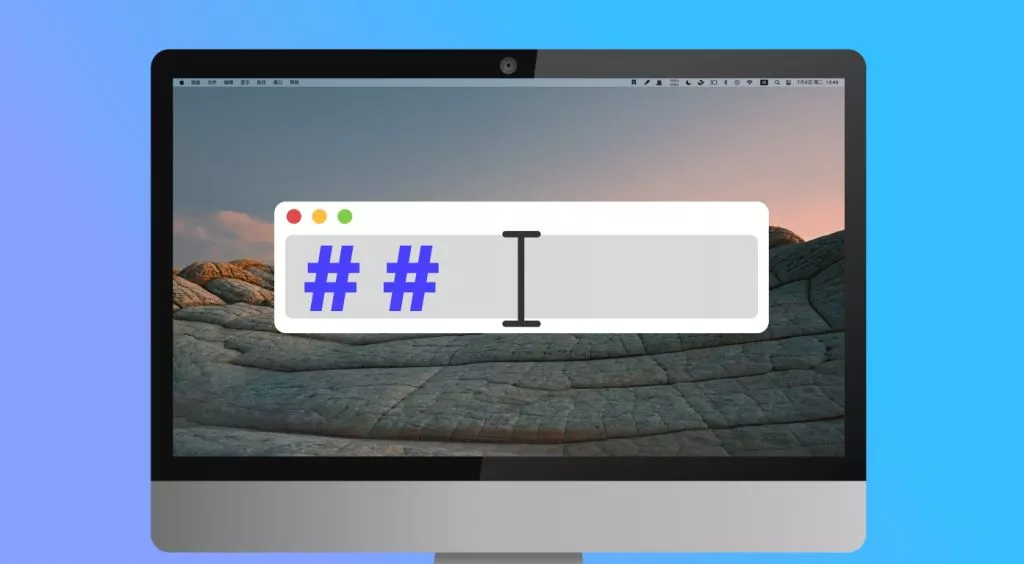
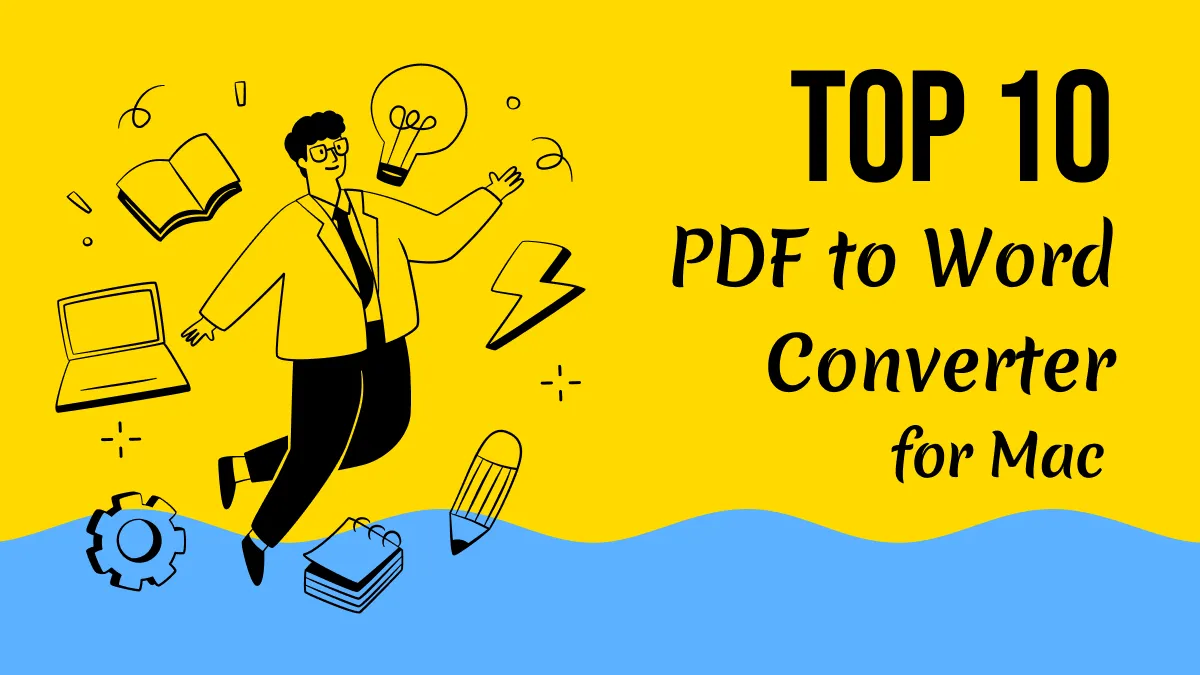
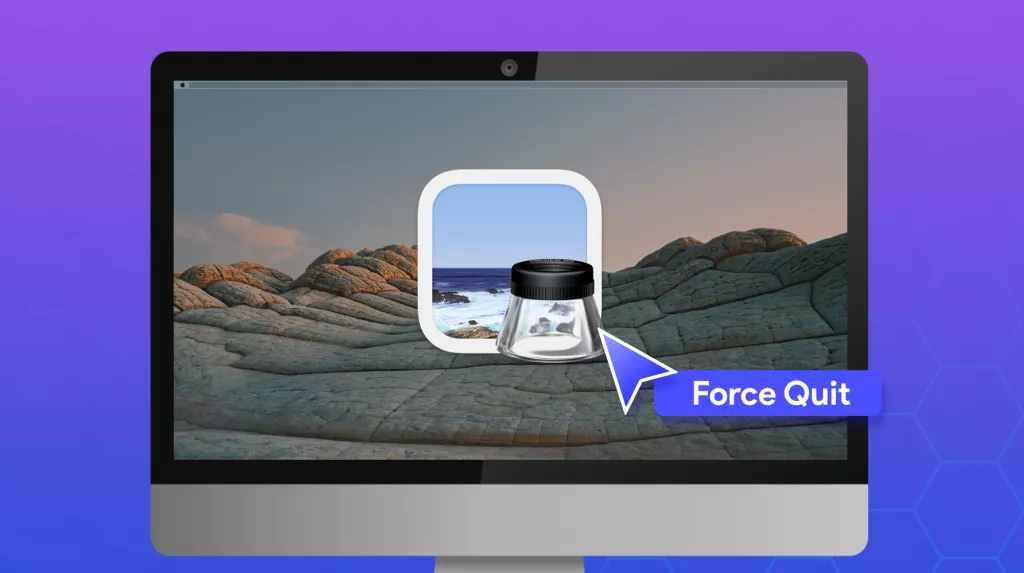
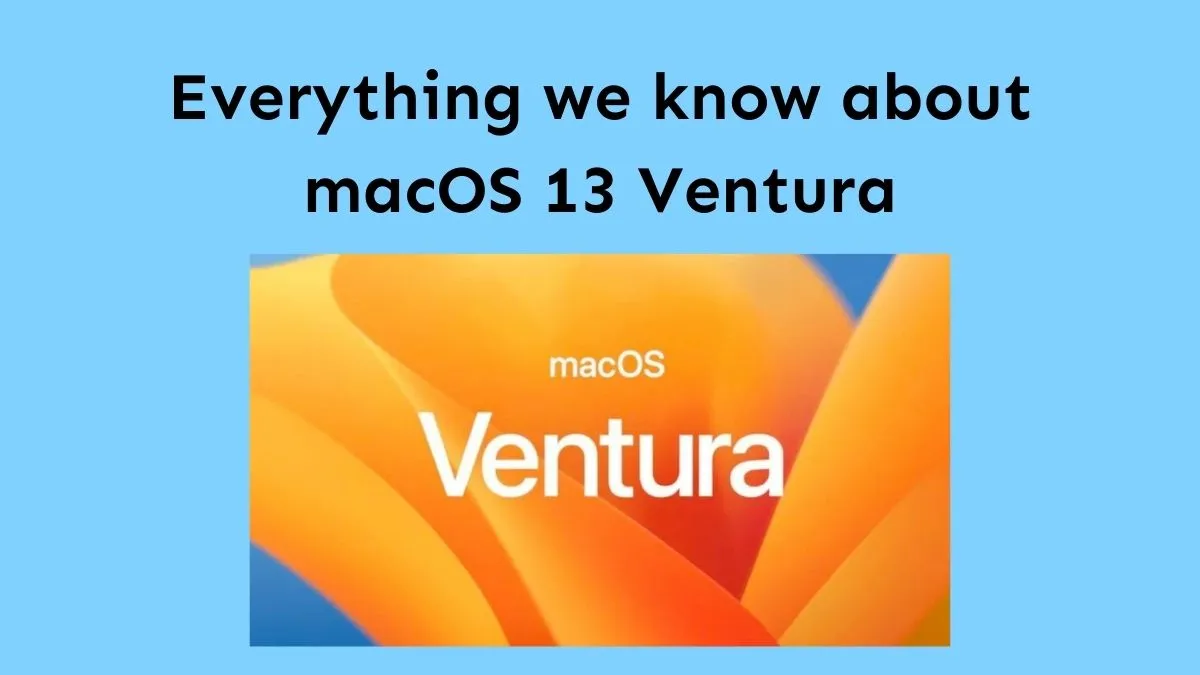
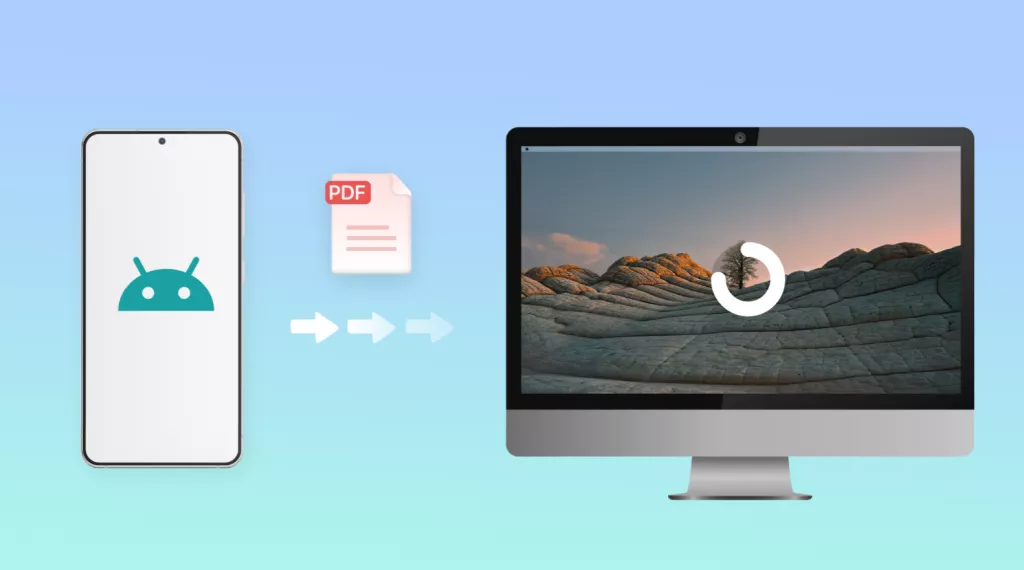
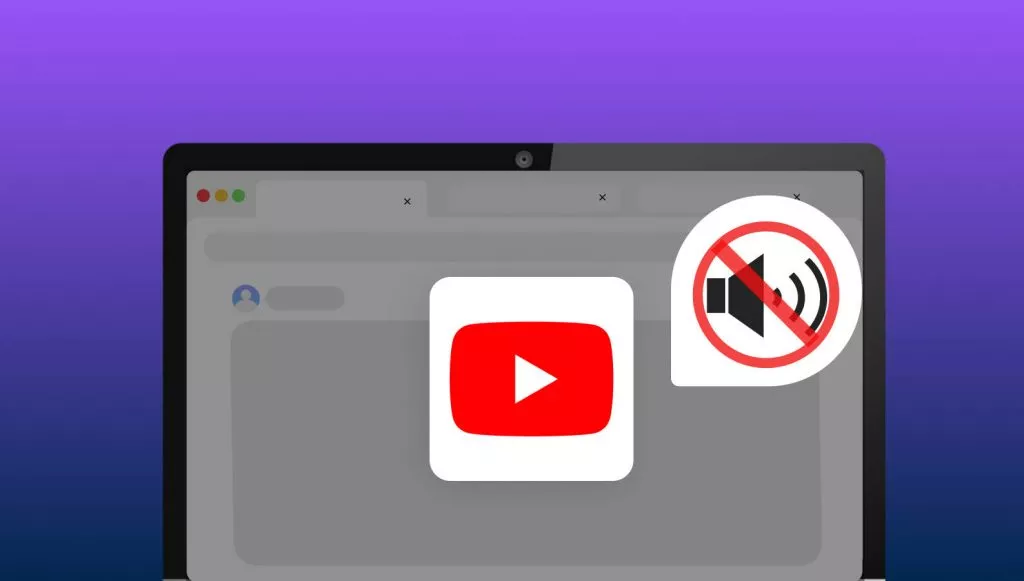
 Enola Miller
Enola Miller 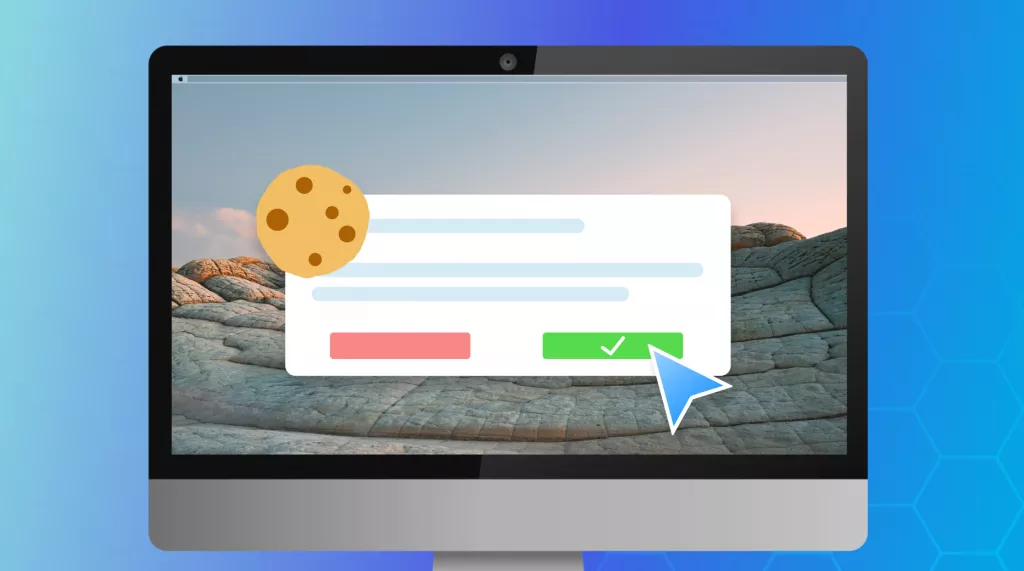
 Enola Davis
Enola Davis 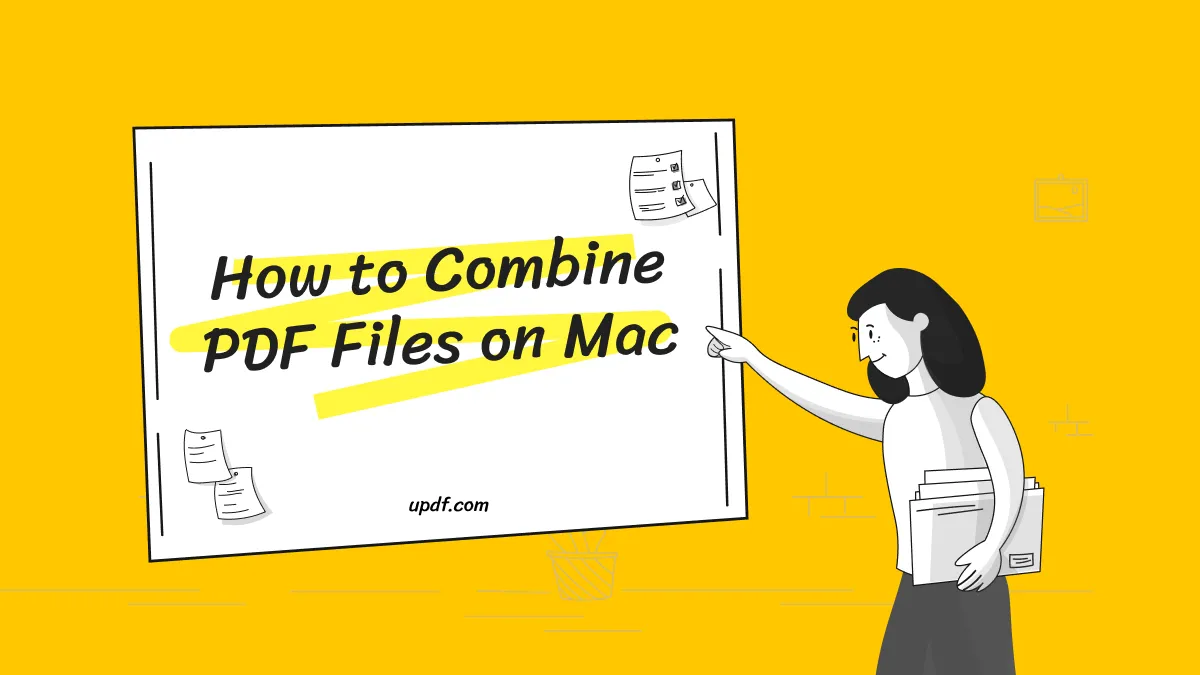
 Enrica Taylor
Enrica Taylor 